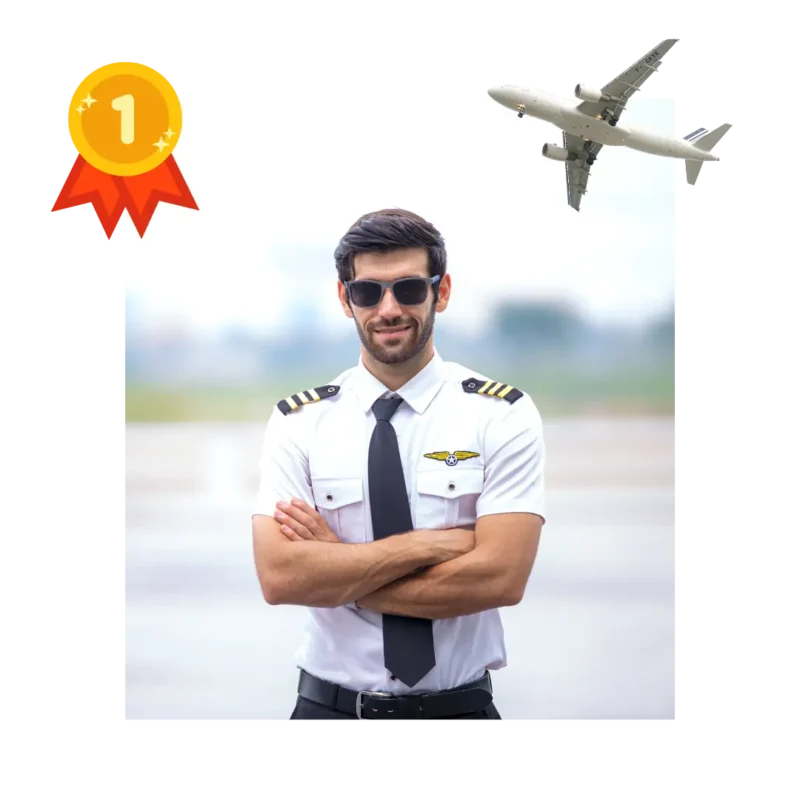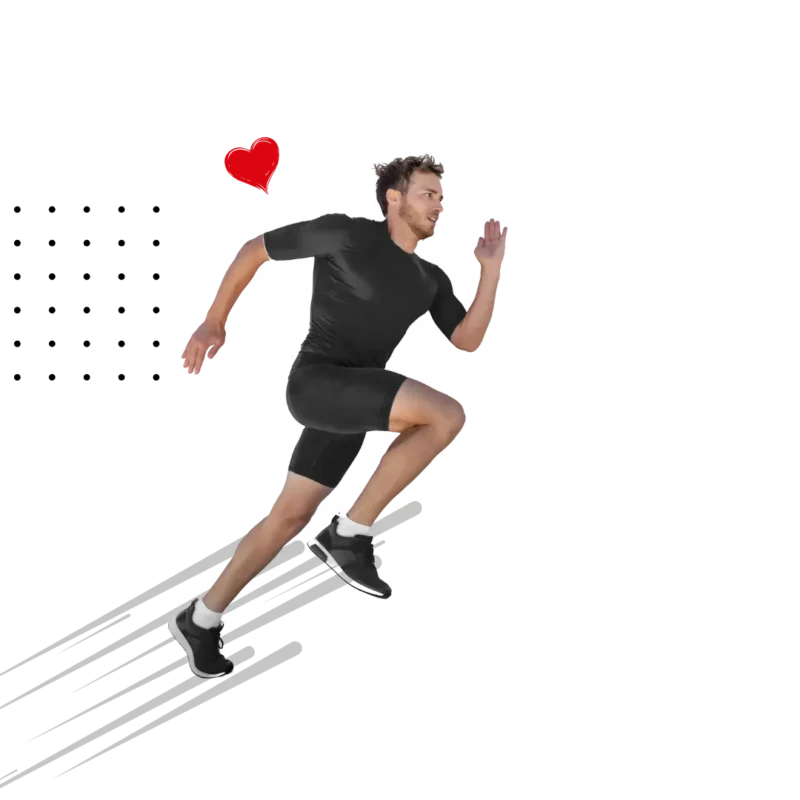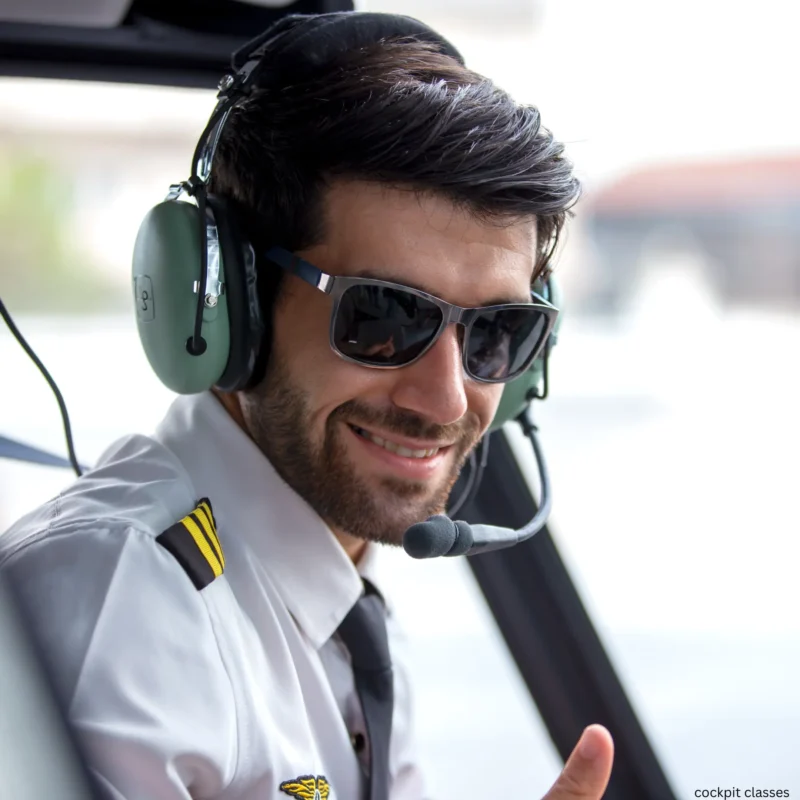How to become a pilot?
This page outlines the steps to pursue training specifically for becoming a commercial pilot.

Minimum Requirements To
Enroll For CPL Training

Proficiency in English Language
Proficiency in reading, writing, and understanding English is essential to pursue a CPL course.

Min. age requirement for obtaining a CPL is 18 years.
You can enroll in the pilot training program at 17 years of age, as it typically takes a year to complete the course .

Minimum Qualification Required for CPL Issuance
Completion of 10+2 with Physics and Mathematics or equivalent. If you have a non-science background, you can complete Physics & Mathematics through NIOS to meet the eligibility requirements for technical courses.

Medical Fitness For Pilot Training
Ensuring you are medically fit to fly is a mandatory requirement before you invest in a pilot course. The medical clearance process consists of two steps:
Class 2 Medicals:
Class 2 medical examinations can be conducted across India by DGCA-appointed doctors. After completing the examination, you will receive a CA-35 assessment form as a preliminary fitness certificate. Your reports will then be sent to the DGCA office, which will issue the final medical assessment.
Class 1 Medicals:
The initial Class 1 medical assessment can only be conducted in five cities: Mumbai, Bangalore, Delhi, Chennai, and Jorhat. You can apply for a Class 1 medical assessment date only after receiving your Class 2 assessment from the DGCA.
File Number:
A permanent and unique file number will be issued along with your Class 2 assessment. This file number will be mentioned on the Class 2 assessment and is required for reference. All documents submitted to the DGCA will be associated with this file number.
Commercial Pilot License (CPL) Program
CPL training comprises of two elements
Theoretical knowledge
Practical knowledge

Theory Papers
To appear for the theory examinations, you must first obtain a computer number by following the guidelines provided at www.pariksha.dgca.gov.in. After completing the online registration form, you must send the application form along with the required attested documents to the DGCA office within 10 days. Failure to do so will result in your application not being considered. Once the DGCA receives your documents, you will receive a confirmation email at your registered email address.
Theory Exams:
Theory examinations for all subjects are conducted four times a year. Most of the theory papers consist of multiple-choice questions (MCQs). With adequate preparation, you should be able to select the correct answers. The specific theory papers you need to pass will depend on your choice of flight training school, whether in India or abroad. The table below provides a clear summary for your reference.
Flight Training
The next step in your journey is where the real adventure begins—you’ll take your seat in an aircraft and start your flying lessons. However, selecting the right flight training institute is crucial, as the skills you develop as a pilot will largely depend on the quality of your flying school.
As the saying goes, “A pilot’s license in your pocket will only get you an interview; it’s the quality of your flight training that will secure your airline pilot job.”
The cost of flight training is comparable both in India and abroad, so choosing wisely is key. Here are some factors to consider when selecting a flying school:
- DGCA-Approved Flying Schools: Ensure the school is approved by the DGCA and offers quality training that meets international standards.
- Instrument Flying Exposure: Choose a school that provides correct and comprehensive instrument flying training.
- Communication Skills: Learning to communicate effectively in busy international airspaces is essential.
- Controlled and Uncontrolled Airspaces: A balanced exposure to flying in both controlled and uncontrolled airspaces is critical for your development.
If you opt for a flying school abroad, you may have the advantage of holding a dual pilot license, which can significantly benefit your career.
For your convenience, we’ve simplified the minimum flight training requirements set by the regulator, which you can also review on the official DGCA website: www.dgca.gov.in.

DGCA REQUIREMENTS
100 HOURS PILOT IN
COMMAND (PIC)
250 NAUTICAL MILES
(NM) CHECK
40 HRS INSTRUMENT
FLIGHT
100 HOURS PILOT IN
COMMAND (PIC)
120 NAUTICAL MILES
(NM) CHECK
10 HOURS
MULTI-ENGINE
300 NAUTICAL
MILES (NM) CHECK
10 TAKE OFF AND
LANDING BY NIGHT
Flight Training In India
Pass all applicable theory papers
+
Flight training as per regulatory guidelines
+
Flying Skill checks in India with Dgca appointed examiner
↓
Submit documents to DGCA for the issue of Commercial Pilot license
Flight Training Abroad
Pass all applicable theory papers
+
Obtain Commercial Pilot license abroad
↓
Return to India
+
Flying Skill checks in India with Dgca appointed examiner
↓
Submit documents to DGCA for the issue of Commercial Pilot license
Some of the process to become a pilot
Step 1: Meet the Basic Eligibility Criteria
- Age: You must be at least 17 years old to start training and 18 years old to obtain a Commercial Pilot License (CPL).
- Education: Pass 10+2 with Physics and Mathematics, or an equivalent diploma. Candidates from non-science backgrounds (e.g., commerce or arts) must complete Physics and Mathematics from recognized open schools like NIOS.
- Language Proficiency: Must be able to read, write, and understand English.
Step 2: Medical Fitness Assessment
Flying requires excellent physical and mental health. The medical process includes:
Class 2 Medicals:
Conducted across India by DGCA-appointed doctors. After the examination, you’ll receive a CA-35 fitness certificate. Reports are sent to the DGCA, which will later issue your medical assessment.Class 1 Medicals:
Conducted in five cities: Mumbai, Bangalore, Delhi, Chennai, and Jorhat. You can apply for this only after receiving your Class 2 assessment.File Number:
A unique file number is issued with your Class 2 assessment, serving as your permanent reference for DGCA documentation.
Step 3: Obtain a Computer Number
The computer number is required to appear for theory exams and can be obtained through the DGCA’s Pariksha portal.
- Complete the online registration form and send the required documents to the DGCA within 10 days.
- You will receive a confirmation email once your documents are processed.
Step 4: Pass DGCA Theory Examinations
- Conducted four times a year, mostly as multiple-choice questions (MCQs).
- Subjects and requirements depend on whether your training is in India or abroad.
- Adequate preparation is essential to succeed.
Step 5: Enroll in a Flight Training Program
Choose a DGCA-approved flying school in India or abroad. Factors to consider:
- Quality of flight training.
- Instrument flying exposure.
- Communication skills training in international airspace.
- A mix of controlled and uncontrolled airspace exposure.
If you choose a school abroad, you might earn a dual pilot license, which can benefit your career.
Step 6: Complete the Required Flight Training Hours
Minimum flight training requirements:
- At least 200 hours of flight time for CPL issuance.
- Training includes solo, cross-country, night flying, and instrument training.
Step 7: Apply for a Commercial Pilot License (CPL)
- Submit your training records, theory exam results, and medical assessments to the DGCA.
- Ensure you meet all regulatory requirements before applying.
Step 8: Gain Additional Certifications (Optional)
- Consider obtaining additional certifications like Instrument Rating (IR) or Multi-Engine Rating (MER).
- These certifications can enhance your employability and career prospects.
Step 9: Apply for Airline Jobs
With a CPL, you can start applying for airline pilot positions. Airlines may require you to pass additional aptitude tests, simulator assessments, and interviews.
Step 10: Upgrade to an Airline Transport Pilot License (ATPL)
After gaining sufficient flight experience (1,500 flight hours), you can apply for an ATPL, which is mandatory to become a Captain.
Additional Notes
- Stay updated with DGCA guidelines and regulations through their official website.
- Be prepared for consistent hard work, dedication, and financial investment throughout the process.
By following these steps diligently, you can achieve your dream of becoming a pilot.

